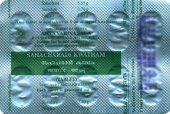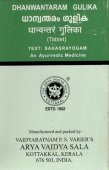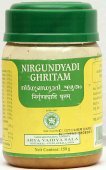Suradaru, Sura-daru, Suradāru: 8 definitions
Introduction:
Suradaru means something in Hinduism, Sanskrit, biology. If you want to know the exact meaning, history, etymology or English translation of this term then check out the descriptions on this page. Add your comment or reference to a book if you want to contribute to this summary article.
In Hinduism
Ayurveda (science of life)
Cikitsa (natural therapy and treatment for medical conditions)
Source: Wisdom Library: Ayurveda: CikitsaSuradāru (सुरदारु):—Another name for Devadāru (Cedrus deodara), a medicinal plant and used in the treatment of fever (jvara), as described in the Jvaracikitsā (or “the treatment of fever”) which is part of the 7th-century Mādhavacikitsā, a Sanskrit classical work on Āyurveda.

Āyurveda (आयुर्वेद, ayurveda) is a branch of Indian science dealing with medicine, herbalism, taxology, anatomy, surgery, alchemy and related topics. Traditional practice of Āyurveda in ancient India dates back to at least the first millenium BC. Literature is commonly written in Sanskrit using various poetic metres.
Biology (plants and animals)
Source: Google Books: CRC World Dictionary (Regional names)Suradaru in India is the name of a plant defined with Cedrus deodara in various botanical sources. This page contains potential references in Ayurveda, modern medicine, and other folk traditions or local practices It has the synonym Pinus deodara Roxburgh (among others).
Example references for further research on medicinal uses or toxicity (see latin names for full list):
· Penny Cyclop. (1833)
· Himalayan journals (1854)
· Flora Indica, or ‘Descriptions of Indian Plants’ (1832)
· Loudon’s Hortus Britannicus. (2363)
· Dictionnaire classique d’histoire naturelle (1823)
· Species Plantarum
If you are looking for specific details regarding Suradaru, for example side effects, diet and recipes, pregnancy safety, chemical composition, extract dosage, health benefits, have a look at these references.

This sections includes definitions from the five kingdoms of living things: Animals, Plants, Fungi, Protists and Monera. It will include both the official binomial nomenclature (scientific names usually in Latin) as well as regional spellings and variants.
Languages of India and abroad
Sanskrit dictionary
Source: DDSA: The practical Sanskrit-English dictionarySuradāru (सुरदारु).—n. the Devadāru tree.
Suradāru is a Sanskrit compound consisting of the terms sura and dāru (दारु).
Source: Cologne Digital Sanskrit Dictionaries: Shabda-Sagara Sanskrit-English DictionarySuradāru (सुरदारु).—n. (-ru) A sort of Pine, (Pinus Devadaru.) E. sura a deity, dāru wood.
Source: Cologne Digital Sanskrit Dictionaries: Monier-Williams Sanskrit-English DictionarySuradāru (सुरदारु):—[=sura-dāru] [from sura > sur] n. Pinus Deodora, [Suśruta; Varāha-mihira’s Bṛhat-saṃhitā; Bhāgavata-purāṇa]
Source: Cologne Digital Sanskrit Dictionaries: Yates Sanskrit-English DictionarySuradāru (सुरदारु):—[sura-dāru] (ruḥ) 2. n. The devādaru pine.
[Sanskrit to German]
Sanskrit, also spelled संस्कृतम् (saṃskṛtam), is an ancient language of India commonly seen as the grandmother of the Indo-European language family (even English!). Closely allied with Prakrit and Pali, Sanskrit is more exhaustive in both grammar and terms and has the most extensive collection of literature in the world, greatly surpassing its sister-languages Greek and Latin.
Kannada-English dictionary
Source: Alar: Kannada-English corpusSuradāru (ಸುರದಾರು):—[noun] the state or quality of being a god; divinity; godhood.
Kannada is a Dravidian language (as opposed to the Indo-European language family) mainly spoken in the southwestern region of India.
See also (Relevant definitions)
Partial matches: Sura, Daru, Taru, Cura.
Starts with: Curataru, Suradarumaya.
Query error!
Full-text: Suradarumaya, Curataru, Surataru, Stanyashodhana, Devadaru.
Relevant text
Search found 11 books and stories containing Suradaru, Sura-daru, Sura-dāru, Suradāru; (plurals include: Suradarus, darus, dārus, Suradārus). You can also click to the full overview containing English textual excerpts. Below are direct links for the most relevant articles:
A preliminary standard for ‘suradarulepa churna’- an ayurvedic preparation < [Volume 8 (issue 3-4), Jan-Jun 1989]
Anti-inflammatory effects of Balarishta and Dhanvantara Gutika. < [Volume 17 (issue 4), Apr-Jun 1998]
Sushruta Samhita, volume 4: Cikitsasthana (by Kaviraj Kunja Lal Bhishagratna)
Brihat Samhita (by N. Chidambaram Iyer)
Cosmetics, Costumes and Ornaments in Ancient India (by Remadevi. O.)
2.9. Pharmaceutical use of Anulepana (Unguents) < [Chapter 1 - Cosmetics]
World Journal of Pharmaceutical Research
Therapeutic review of nirgundi < [2022: Volume 11, December special issue 17]
Role of stanya shodhak mahakashaya wsr to childand#039;s development < [2022: Volume 11, Septmber issue 12]
Review of Cedrus deodara (Roxb.) Loud. with a focus on Nighantus. < [2022: Volume 11, May issue 5]
International Ayurvedic Medical Journal
Randomized clinical study on upashayatmaka effect of koladi pradeha in apabahuka vis-a-vis frozen shoulder < [2022, Issue 09 September]
A comparative clinical study to evaluate the effect of sahacharadi kwatha and nagaradi kwatha in the management of janusandhigatavata < [2018, Issue IX, September]
A review article on navajata balaka paricharya with modern aspects < [2024, Issue 11. November]
Related products
(+1 more products available)





